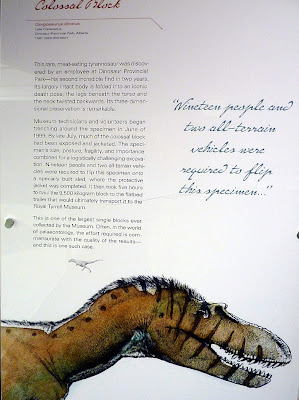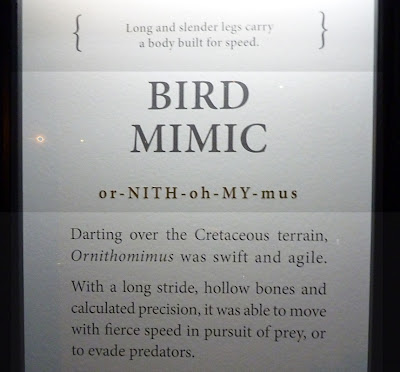The Wilds is located near Cambridge, Ohio. It is one of the largest conservation centers in the world, nearly 10,000 acres, situated on land strip mined in the 1960s and 1970s and reclaimed in the early 1980s.
View Larger Map
We stayed overnight in the yurts of Nomad Ridge, on-site lodging offered by The Wilds.
The view from Nomad Ridge had some changes since our last visit: there is a zipline down the ridge and across the lake. You might be able to discern a pair of towers alongside the road on the far side of the lake.
Here's a zoom-in on those towers. (There was mist in the air that evening.)
After a restful night at the yurts, then breakfast, we met our guide and climbed into the back of the Wildside Tour pickup truck, which has padded benches. My 87-year-old mother was welcome to sit inside the cab with the guide, but she chose to dress warmly and sit in the open with Joan and me. The lesson is that if you can climb up a few steps -- there is a deployable "gangway" for the pickup -- and hold onto a handrail, then sitting in the back, where the view is better, is an option to consider.
Our first stop was to visit the persian onagers and, nearby, the camels, who enjoy the grasslands but prefer the roads to travel from point A to point B. The onagers had youngsters to guard.
The camels (Bactrian) knew we had treats, and they weren't bashful. Our guide sat on top of the cab to dispense the goodies.
This fellow smiled knowingly at us.
One of his lady friends was also curious, approaching the other side of the truck.
Both of them enjoyed using their mouths to explore the truck, which turned out to be inedible.
The next area, separated by a gate, hosted a herd of Przewalski's horses. They are known to be irritable, and we carefully kept our hands inside the truck.
From there it wasn't far to the Mid-Sized Carnivore Center, where we disembarked from the pickup and explored the elevated boardwalks. The cheetahs were very relaxed.
We also stopped at the cheetah housing, but this time I have no pictures to share. For more on the cheetahs, see this earlier post.
The dholes, or Asiatic Wild Dogs, were less skittish than we had seen them before, possibly because we were the only people in sight, possibly because they have now been at the Wilds for a while, possibly both. Their countenance reminded us of red foxes.
Sadly, I have no pictures of the extremely intelligent African wild dogs.
Upon leaving the carnivore center we came across a Grevy's zebra. This animal occupies a middle ground between asses and zebras; some consider it a striped ass. It inhabits a small area: northern Kenya and southern and eastern Ethiopia. This one had something protruding from his flank (click to enlarge).
He had been darted. Contrary to what you might see in the movies, it takes a while for the drug to take effect. This Grevy's looks doleful; perhaps he realizes he must soon suffer through an exam.
We drove slowly by these fringe-eared oryx.
Before driving to the giraffe barn (many warm-climate animals cannot overwinter outdoors in Ohio), we saw this mother southern white rhinoceros and her nursing baby.
Then there was this older child and adult.
Our final stop on the tour was the giraffe barn; it was cool enough in October for several species to have come indoors for the winter. We were each offered the chance to feed one of the giraffes, and in this picture the giraffe has just used its long, prehensile tongue to pull the lettuce out of Mom's grasp.
Despite the chilly weather Mom enjoyed her visit, and we were pleased.
Despite the chilly weather Mom enjoyed her visit, and we were pleased.
This entry has been posted on March 23, 2012, in honor of what would have been Jean's 88th birthday.









































































